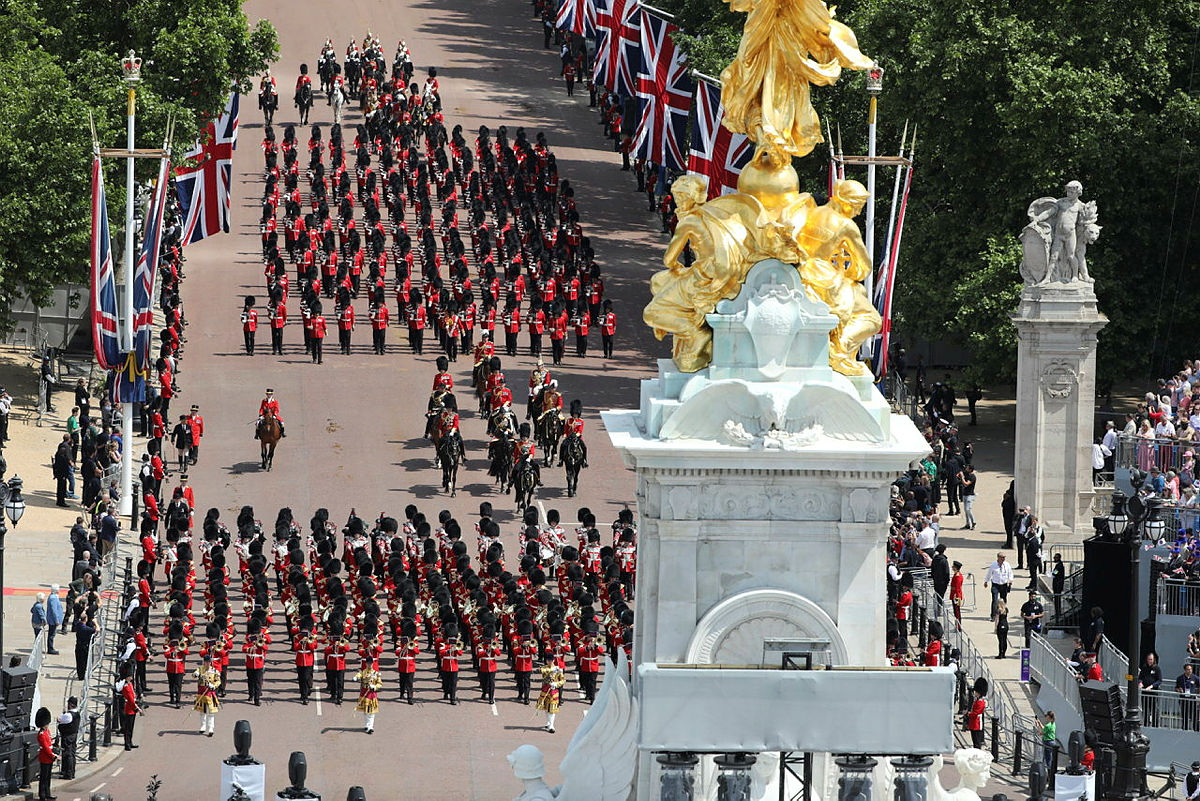Military Tunic
The May 2016 edition of popular fashion magazine Vogue contains a feature exploring some of the Rolling Stones’ most unforgettable costumes, modelled by Kate Moss (Photographed by Craig McDean). One piece of clothing in particular caught our attention, which is the red drummers’ military tunic, traditionally worn by drummers in the bands of the Infantry regiment.
“What the Stones did was to adopt the clothes of the establishment and make them irreverent and threatening. Suddenly these gentlemanly suits become a raucously sexual kind of veneer over their wildness.” (Bella Freud, Vogue 2016).
Mick Jagger had many military jackets, but the one pictured here is the only remaining example in the Rolling Stones archive. He actually bought it for approximately £4 from Robert Orbach at John Stephen on Carnaby Street and wore it for a performance on Ready Steady Go! on October 1966 and recollects that:
“The next morning there was a line of about a hundred people wanting to buy it… We sold everything in the shop by lunchtime” says Orbach. Mick is shown in one of his military tunics here, in March 1967.
Wyedean has manufactured the fleur-de-lis lace used on the military jacket for over 100 years on a specialist jacquard loom. The jacket features both the 19mm and 13mm versions of the lace which are both available to purchase from our store here.
We have been specialists in this field for many years, and are one of the manufacturers of these jackets. If you have requirements for these tailored tunics or complete band uniforms please contact us.
Fleur De Lis Lace
The literal translation of “fleur-de-lis” is “flower-of-the-lily”. Traditionally the design has been used to represent French royalty, and signify perfection, light and life. Legend has it that an angel presented Clovis, the Merovingian king of the Franks, with a golden lily as a symbol of his purification upon his conversion to Christianity. Others claim that Clovis adopted the symbol when waterlilies showed him how to safely cross a river and thus succeed in battle.
In the twelfth century, either King Louis VI or King Louis VII (sources disagree) became the first French monarch to use the fleur-de-lis on his shield. Later, English kings used the symbol on their coats of arms to accentuate their claims to the throne of France. In the 14th century, the fleur-de-lis design was often incorporated into the family insignia that was sewn on the knight’s surcoat, which was then worn over their coat of mail, hence the term “coat of arms” originated. What was once used as a purpose of identification, then transformed into a system of social status designations after 1483 when King Edmund IV established the Heralds’ College to supervise the granting of armour insignia.
Others say when Joan of Arc led the French troops to victory, she carried a banner which depicted God blessing the French emblem, fleur-de-lis. The Roman Catholic Church indorsed the lily as the symbol of the Virgin Mary. Due to its three “petals”, it has also represented the Holy Trinity.
Exhibitionism
The Rolling Stones’ first international exhibition has recently opened at the Saatchi Gallery. Named “EXHIBITIONISM” this is defined as “extravagant behaviour that is intended to attract attention to oneself”, which appears very fitting for the display giving that The Rolling Stones captured the imagination of millions. Exhibitionism shows over 500 original Stones’ artefacts, with striking cinematic and interactive technologies offering the most comprehensive and immersive insight into the band’s fascinating 50 year history.
From never-before-seen dressing room and backstage paraphernalia to rare instruments, original stage designs, iconic costumes, rare audio tracks and video footage, personal diaries, poster and album cover artwork, and unique wraparound cinematic experiences that celebrate every aspect of their careers. Centre stage is the musical heritage that took them from a London blues band in the early 1960s to inspirational cultural icons.
The Rolling Stones have shaped popular culture, often in their own image, and this exhibition will offer a unique perspective that only the band’s own archive can provide. Collaborations and work by a vast array of artists, designers, musicians and writers will be included – from Andy Warhol, Shepard Fairey, Alexander McQueen, and Ossie Clark to Tom Stoppard and Martin Scorsese.
EXHIBITIONISM will be promoted and presented by Australian company iEC (International Entertainment Consulting) with the full participation of Mick Jagger, Keith Richards, Charlie Watts and Ronnie Wood.
For more information visit the site here.




